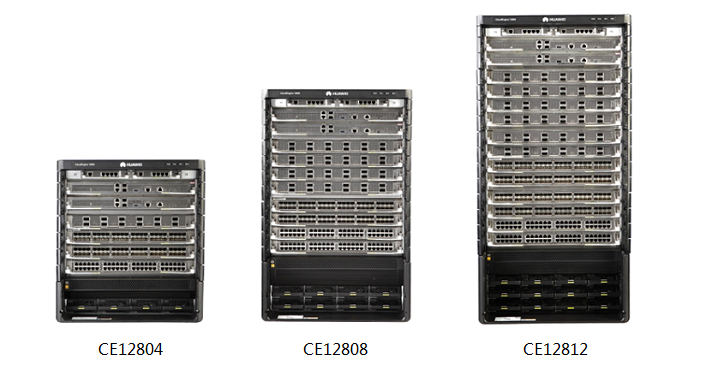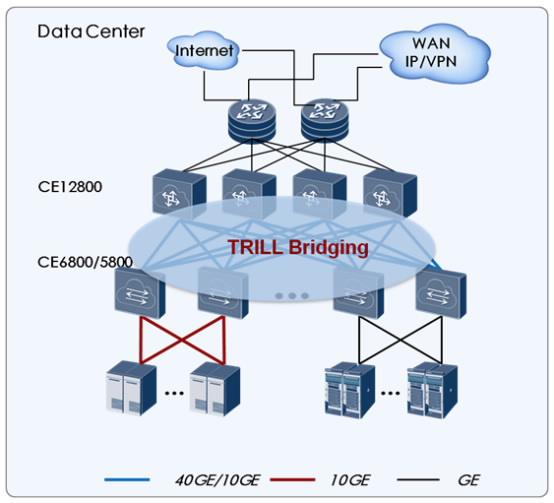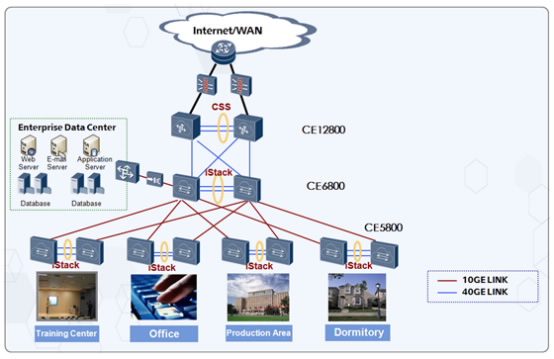CloudEngine 12800 Series High-Performance Core Switches
The CloudEngine 12800 series switches (CE12800 for short) are high-performance core switches designed for data center networks and high-end campus networks. Using Huawei VRP8 software platform, the CE12800 switches provide stable, reliable, secure, and high-performance L2/L3 switching capabilities, and build a scalable, virtualized, and converged network.
The CE12800 switches adopt an advanced hardware architecture design and have the highest performance of all core switches. CE12800 provides a maximum of 48Tbps switching capacity and high-density line-speed ports. Each switch has up to 96*100GE and 288*40GE ports or 1152*10GE ports.
The CE12800 switches use an industry-leading CLOS architecture and a strict front-to-rear ventilation channel design to provide industrial-grade reliability. The switches also provide comprehensive virtualization capabilities and abundant data center features. Moreover, the CE12800 switches use innovative energy-saving technologies to greatly reduce power consumption.





















